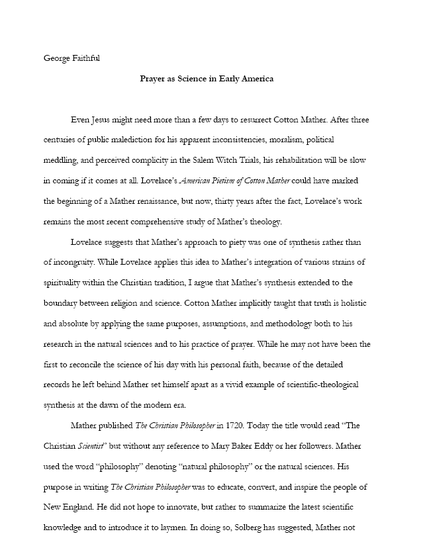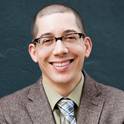
Even Jesus might need more than a few days to resurrect Cotton Mather. After three centuries of public malediction for his apparent inconsistencies, moralism, political meddling, and perceived complicity in the Salem Witch Trials, his rehabilitation will be slow in coming if it comes at all. Lovelace’s American Pietism of Cotton Mather could have marked the beginning of a Mather renaissance, but now, thirty years after the fact, Lovelace’s work remains the most recent comprehensive study of Mather’s theology.
Lovelace suggests that Mather’s approach to piety was one of synthesis rather than of incongruity. While Lovelace applies this idea to Mather’s integration of various strains of spirituality within the Christian tradition, I argue that Mather’s synthesis extended to the boundary between religion and science. Cotton Mather implicitly taught that truth is holistic and absolute by applying the same purposes, assumptions, and methodology both to his research in the natural sciences and to his practice of prayer. While he may not have been the first to reconcile the science of his day with his personal faith, because of the detailed records he left behind Mather set himself apart as a vivid example of scientific-theological synthesis at the dawn of the modern era.
~Presentation excerpt~
Available at: http://works.bepress.com/george-faithful/22/
